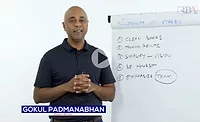The Check Is NOT in the Mail
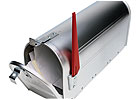
In my role as a large-loss adjuster, I have often seen drying contractors overextend themselves on a major drying job. This is doubly true during catastrophe situations where there is widespread demand for drying services. While it is true that many contractors did well from the Florida hurricanes and Katrina, it is also true that too many lost money, or worse.
Those of us who work in the large-loss arena know the initial rush that comes with the assignment of a major event, each with its own set of problems, personalities and pressures. For the drying contractor taking on a large project, this represents a major commitment in time, equipment (read: money) and labor (read: more money). While these assignments can be and should be profitable for the contractor, recovery is frequently tied to the recovery from the insurance company. Hence, your relationship with the adjuster.
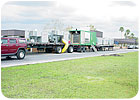
What I do care about is stopping a “loss in progress” by drying the property to reduce damage and business interruption. My goal is to achieve this and have solid documentation detailing the conditions prior to drying, environmental conditions during the process, a description of work performed and a summary of costs to bring structure and contents to normal equilibrium.
It is axiomatic to note that one common element in all great train wrecks is a lack of planning. I have been involved in too many large losses where the contractor attacks a drying job by dropping off as much equipment as can be obtained on short notice. This sometimes involves taking on workers or subcontractors with whom there is no previous experience. While this sounds like an obvious recipe for disaster, it amazes me how often this happens, even with experienced contractors. It may be that this approach has been successful in the past. The risk comes when the loss becomes a little larger and the job goes badly, as is bound to happen from time to time.
I frequently become involved in losses well after the date of loss. Bear in mind that the adjuster you start with may well not be the one who finally recommends, or contests, your bill. When I become involved in a large drying job, I look to verify the contractor clearly defined the problem, investigated extent of damage and devised a drying plan to the unique demands of the job. Remember, the customer is paying for drying and documentation based on your expertise, not rental of equipment.
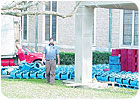
As a practical matter, after even a few weeks I will need to consider what exactly the drying accomplished, and how much time and/or building materials are actually saved before I consider the bill. I will challenge costs to dry building materials that probably needed to be removed before we started drying. One of my favorites was the nursing home flooded with black water, where carpet and building materials were dried in a costly exercise. If it had to come out initially, don’t bill me for drying it.
I became involved in a multi-story high rise that had taken heavy water on several levels. The owner brought in an excellent local contractor who did not have a lot of drying experience. He subsequently employed subcontractors who also took on subcontractors, with each making agreements for overhead and profit to be added to their respective invoices. This resulted in overhead and profit being charged on overhead and profit at multiple levels. These agreements were not discussed beforehand with the owner/insurance company, who quite rightfully disputed the general contractor’s overhead and profit being added to what in essence was a single-trade operation.
In this situation, there were further problems coordinating between the different subcontractors who were not used to working together. Equipment overlapped or was absent; technicians billed for laborers work; and equipment sat idle due to confusion with fuel and power sources. The kicker was when one sub failed to put the dumpsters in the correct location, so demolition crews simply threw building materials out construction openings, allowing debris to pile up against otherwise undamaged siding. Guess who paid for that?
One other case comes to mind where the contractor did not really oversee the work. His field staff followed his instructions to pull saturated carpets and moldings and cut Sheetrock at the seam to expedite remediation and drying. Unfortunately, his crews actually reinstalled the moldy base moldings. This became a liability claim against the contractor when mold subsequently covered the walls.
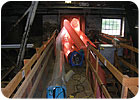
During Hurricane Katrina we ran into situations where extensive drying activities had occurred on structures that sustained hurricane damage as well as uninsured flood damage. I cannot emphasis enough the importance of knowing who will be involved in paying your bill, and documenting agreement on the plan and projected costs. One top-notch contractor I know did a fabulous job saving a particularly valuable property, only to have to wait over a year to collect due to disputes as to flood vs. wind and other coverage issues. Fortunately, his documentation allowed him to prevail, but more clearly defined commitments might have avoided a nightmare of a collections problem. Remember, the adjuster you first deal with may well not be the one you end up with.
The best guarantee that the check will be in the mail is to spend the time necessary to accurately assess the potential job, then document the initial conditions, the process and the result. Before taking on a job, determine how much equipment is required and be prepared to support your position. Documentation of environmental conditions, photographs and diagrams serve to support projected time and costs to complete the job.
During the process, use of data loggers and daily records to preserve temperature, humidity and material moisture content readings can demonstrate progress, or quickly identify a lack of progress. At the end of the job, the client is expecting a report documenting the environmental conditions during the drying process as well as moisture content readings at the beginning of the job and at normal equilibrium. The best way to make sure the check is in the mail is to be able to show how good you are at what you do. If you liked this feature, circle 126 on page 51.
Looking for a reprint of this article?
From high-res PDFs to custom plaques, order your copy today!





